Climate-Smart Travel: 10 Tips to Make You Feel Less Bad About Flying [Part 5]
This is Part 5 of my series for Tourism Declares A Climate Emergency – all about climate smart travel and finding realistic ways to do better.
Need to catch up? Here are the rest of the posts in this series on travel and climate:
- Part 1: This Travel Blog Declares A Climate Emergency (Wait, What?)
- Part 2: Confession: This Is My Carbon Footprint from Flights This Year
- Part 3: The Best Travel Carbon Calculators (To Find Lower-Emission Flights & Travel)
- Part 4: Should You Buy Carbon Offsets for Your Travel or… Something Else?
A few posts ago in this series, I calculated my carbon footprint from the 30 flights I took in 2022. The number I came up with was just slightly over 16 metric tonnes of CO2.
That is, statistically and technically speaking, a shit ton of carbon emissions. Excuse my French, but my god, it’s a lot.
To give some context, the individual emissions budget determined by the IPCC (in plain English: how much each person on the planet should emit each year in order to keep climate change to 1.5 degrees C) is 1,500 kg. That’s about 1/10th of my personal emissions just from flights last year.
And I based my calculation on flights because those are the lion’s share of my emissions. Of course, that won’t be true for everyone, but considering my line of work and how much travel it entails/allows, it’s a fair assumption.
(Of the 30 individual flights I took in 2022, most were for business travel – to destinations I wrote about for this blog, like Italy and Mississippi, or for professional conferences. Since there’s such a fine line between work and personal travel in my business, I included all of my flights in the calculation.)
Recap – Why am I doing this, again?
Sharing all of this information was part of my commitment to Tourism Declares A Climate Emergency. When I originally joined, in 2021, the premise of the “club” was that every member (mostly travel businesses, like tour companies) needed to calculate their emissions for a “base year,” (I used 2022), and then make a plan for how to reduce those emissions by 50%.
(Tourism Declares then changed its requirements slightly, as I explained in Part 1, to align with the Glasgow Declaration on Climate Action in Tourism. (I’m a signatory of that one, as well.) But the point is still that I have to find ways to reduce emissions.)
So the most important question is: How?
Here’s what I’ve come up with – these are the rules I’m living by to reduce my travel carbon footprint. They’re simple strategies we can all apply to achieve more climate-smart travel:
1. Fly direct whenever possible.
Direct flights are more efficient because planes burn the most fuel during take-off and landing. So minimizing the number of take-offs and landings is the simplest way to reduce the emissions per mile you want to travel.
2. Make short-haul flights the first ones you skip.
Mostly for the same reason as above, short-haul flights are the most wasteful way to travel. Think about it: A plane needs the same burst of power to get off the ground whether it’s going to fly 500 miles or 5,000 miles. (Consider the same type of plane, of course.)
Using all that energy to get airborne and then not going very far really brings up the carbon emission per mile.
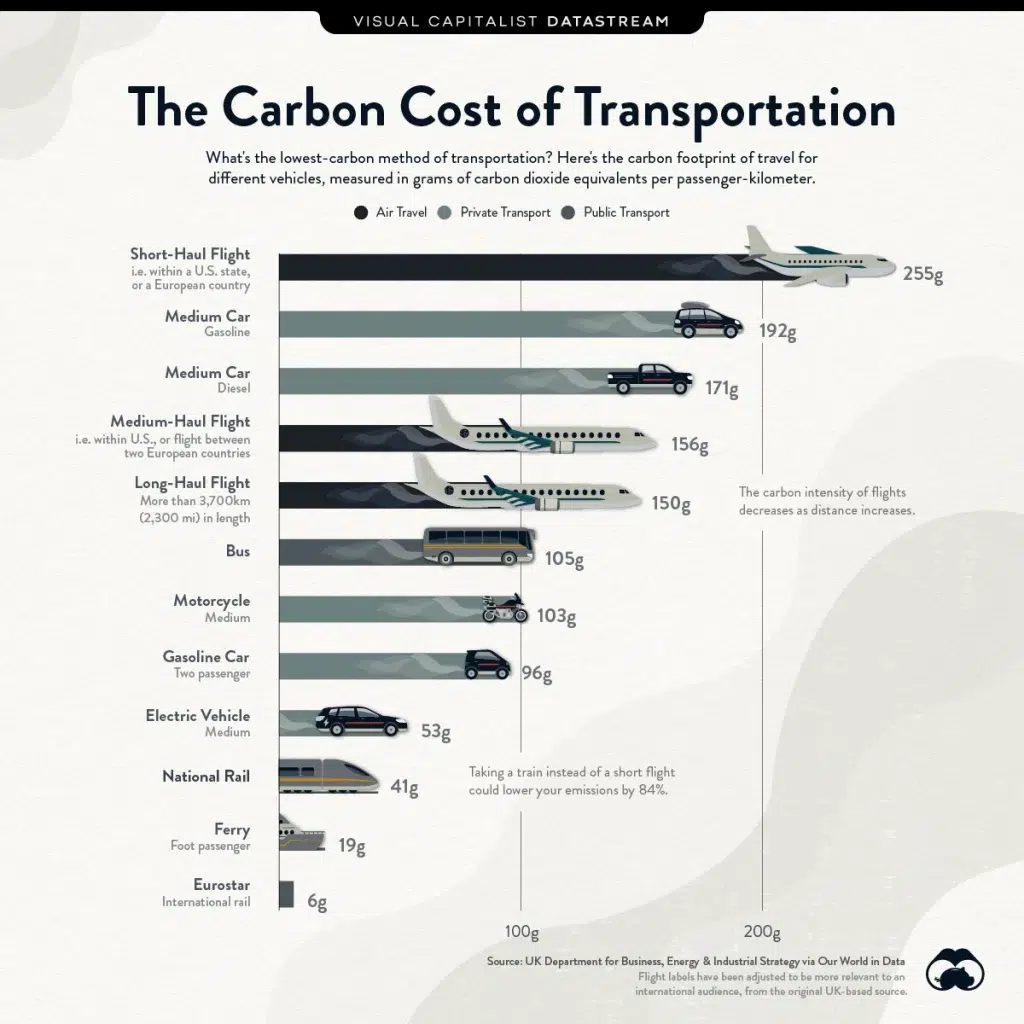
So replacing shorter flights with ground transportation or ferries should be the very first change you make on this list.
Tip: Use Omio to search for every available transit option for a certain route. For Europe and North America, it shows train, bus, flight, and ferry options in a single search.
[Details: Check out my review of Omio and other train booking platforms.]
More Travel Guides:
- Guide to train travel in Italy
- Guide to ferry travel in Greece (and around Europe)
- 3 Days in the Adirondacks – and how to get there without a car or plane
3. Always fly the most efficient airline.
This doesn’t get talked about enough, and based on the comparisons I’ve done, it can sometimes even be more powerful than flying direct.
As I’ve said before, one thing I really love about the flight carbon calculator Atmosfair is that it shows results in terms of the most efficient airlines.
And the differences in emissions can be massive – easily 30%, but I’ve found examples where it’s up to 63%.
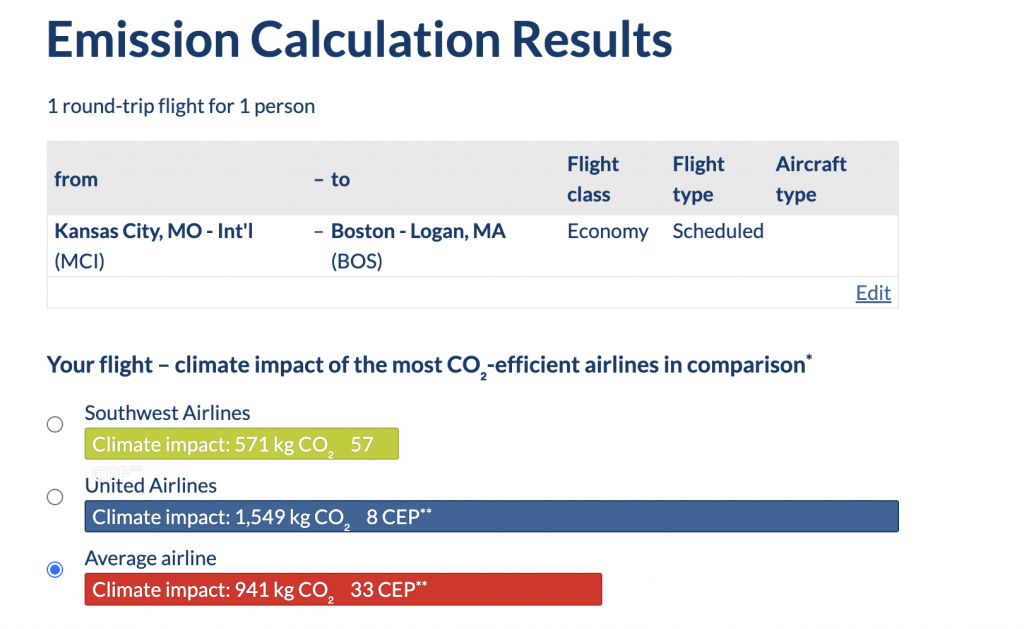
I wish it were as easy as just saying, “Always fly X airline, they’re the most efficient.”
But that’s not the case. It depends on what type of aircraft each airline uses for each route. The best airline for one route is often the worst for another.
Tip: That’s why I use Kayak’s “Least CO2” filter to sort search results by carbon emissions.
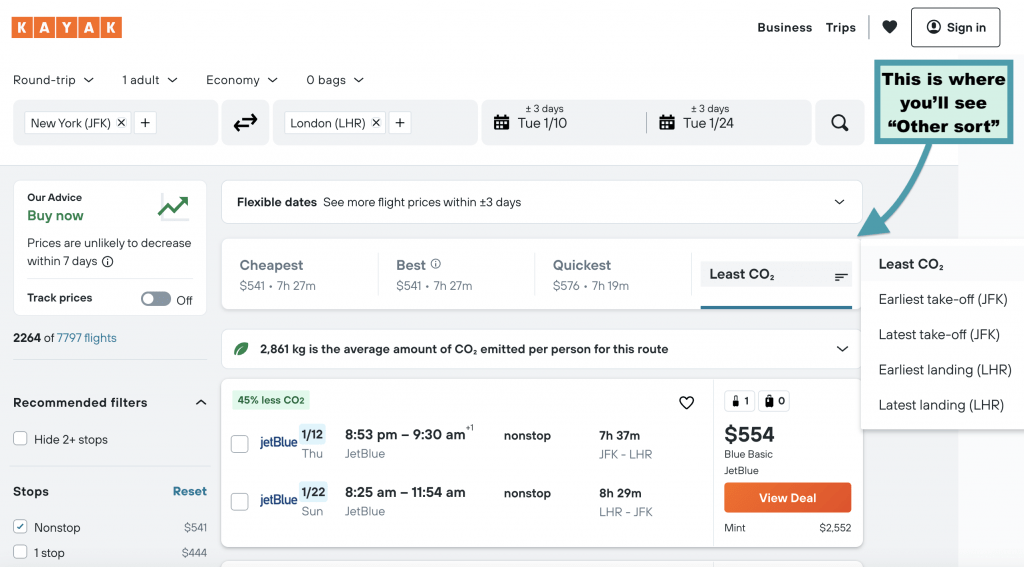
UPDATE: Sadly, Kayak has removed the CO2 comparison feature from their search results. Skyscanner still has it though. Stay tuned for a guide to using it, coming soon.
It was only after I calculated my air travel emissions for 2022 that I realized I had bought a ticket on the most efficient airline for the route for 23 of my 30 flights.
(I had already been paying attention to the info in my flight searches, but I wasn’t really aware of how much of a difference it would make until I ran the numbers at the end of the year. And yes, I was still choosing more based on price than emissions – although more efficient are not always more expensive!)
But still, if I’d always bought a ticket on the most efficient airline, instead of just usually, my overall carbon footprint from flights would have been 16% lower.
That may not sound like much, but when you’re trying to reduce your travel emissions by 50%, that’s almost a third of the job, from one easy change!
4. Fly less, but on purpose – for fun!
Yes, flying less is the most obvious suggestion, and it’s also the least helpful, in the way it’s normally presented.
Don’t get me wrong, even just the boring advice to consider taking fewer flights has to be part of the conversation. But it’s more useful to know that there are travel start-ups coming up with creative ways to do something other than fly.
Travel Ideas:
Here are two examples, both from companies whose founders I met at a travel conference (that I flew to) last year:
- Byway Travel, a company that plans flight-free vacations in Europe! Pretty much the coolest idea ever, in my opinion, they help make taking the train a fun part of the journey, instead of a hassle.
- Basecamp523, a small Italian tour operator that hosts cycling adventures in Central Italy. The trips range from multi-day e-bike tours through vineyards and rural artisans’ workshops, to aggressive mountain biking. Instead of renting a car and for a road trip, you could rent an e-bike, reduce emissions, get some exercise, and spend your vacation closer to nature.
- I took one of their more laid-back, food + wine + e-bike trips this summer! And it impressed me so much, that I’m going to host a similar trip in 2024! If you’re interested, read that blog post for details and get on my email list below for updates:
[More: Here are more sustainable tour companies I’ve used and recommend.]
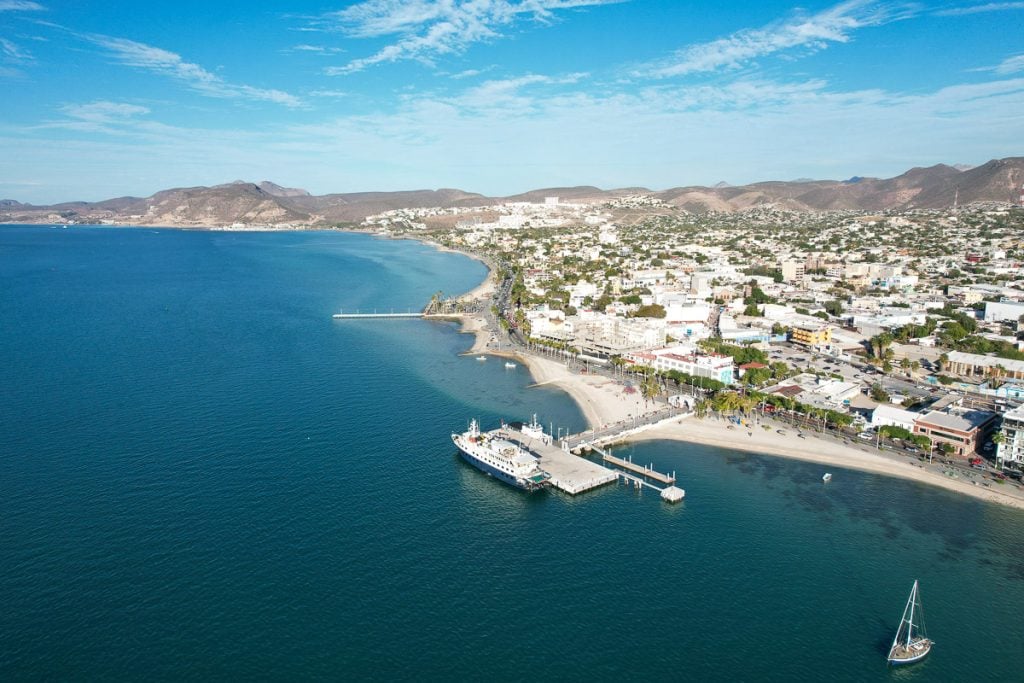
5. Stop worrying about being “hypocritical.”
Oof, I have a lot of thoughts on this. For now, I’ll keep them to just two points:
# 1: Shame is not helpful.
Did you read the point above and think, “Yeah, but if I still have to fly to get to Europe to go on your train or bike trip, what’s the point?”
The point is improving what we can. After all, we’re talking about travel for pleasure – it’s inherently “unnecessary,” in a certain sense.
Were you going to fly to Europe anyway? Then consider that part is a given. It’s done. So the question should be: What’s the point in not finding greener ways to travel once you get there?
That gut reaction that says, “what’s the point, I’d be a hypocrite…” is just shame talking.
And shame isn’t helpful. (It’s part of our culture; it’s normal. But that’s why I don’t do flight shaming.)
What is helpful? Better options that don’t suck the joy out of life.
# 2: Sustainability is not a zero-sum game.
One imperfect action doesn’t cancel out other, better actions. That’s just not the way the science works.
“What’s the point of doing X if you’re going to do Y” is a relevant thought only if it helps you improve Y, but not if it stops you from doing X.
(Read that again if it didn’t sink in. Let that become your new paradigm when thinking about how to travel more sustainably, instead of one built on shame. I promise it will lead to more progress and actual, measurably improvements than just feeling bad about things.)
Progress is the only relevant metric, and aiming for perfection is just going to grind progress to a halt.
[Coming Soon: Stay tuned for a follow-up on this point! I have some stories to tell…]
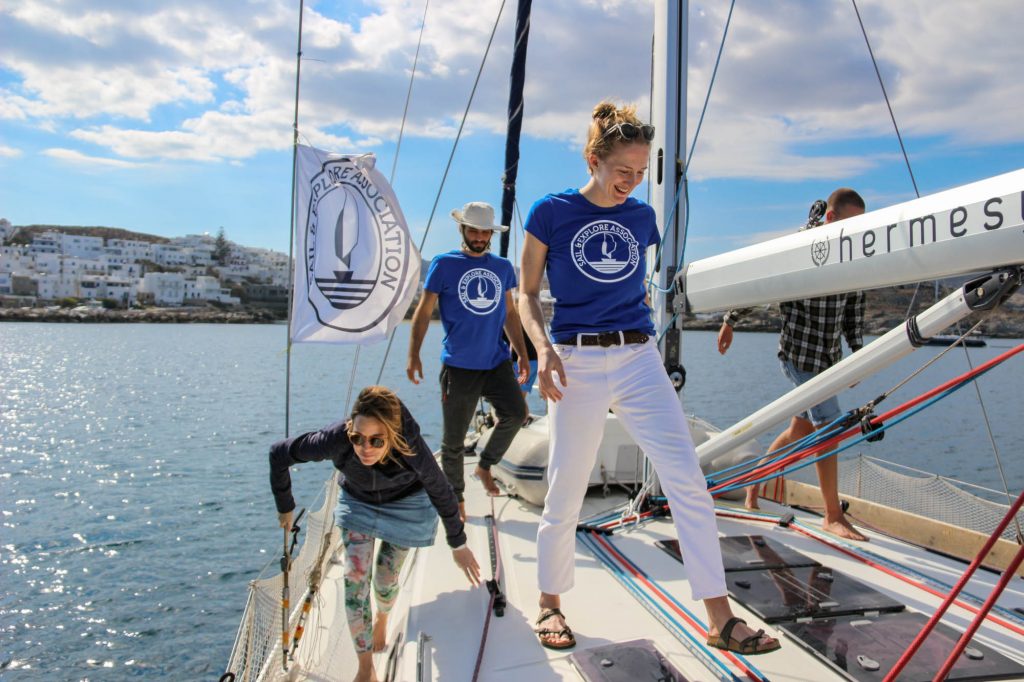
6. Offset flight emissions
Ahh, the ever-controversial carbon offset. It’s controversial because it’s basically the previous idea in reverse. (Offsets try to make up for something bad by doing something good.)
As you were reading Number 3 (about choosing more efficient airlines), you might have wondered why you couldn’t just buy the cheapest flight and offset the emissions, instead of looking for the most efficient flight.
Of course, you could, but the result would not be the same.
Carbon offsets are a lot like another necessary but over-lauded crutch I’ve written about: recycling. Yes, they’re helpful. They’re great for the emissions that are unavoidable, so we should use them – but they don’t fix the problem.
We need to reduce the actual amount of GHG emissions, not just offset them after the fact. (Just like we need to reduce the actual amount of plastic and other single-use packaging we use, not just recycle it after the fact.)
[ Related: Here’s how I avoid buying plastic water bottles – even when traveling in places without safe tap water. ]
That’s why carbon offsets are the last air travel item on this to-do list. But they are a tool. And if you want to invest in offsets, just make sure you’re buying the best ones.
[Don’t worry: I wrote an entire guide to carbon offsets in travel, and what to look for in good ones. Or, go on to Number 7…]
7. Invest in climate projects you believe in.
If you aren’t particularly inspired by the concept of offsets, I get it. But that doesn’t mean you should give up on all climate investments. There are some fantastic programs out there that can do wonders with any amount you want to give.
Here are a few of the best options I’ve found, where I’ve decided to invest:
- Clean Air Task Force
- Tomorrow’s Air – here’s the story on why I like them, from an inspiring interview I did with the founder
- Climate Refugees
- Local climate related projects in your community, from tree-planting, to building efficiency improvements.
[Details about all of these options are in this part of my article on carbon offset alternatives.]
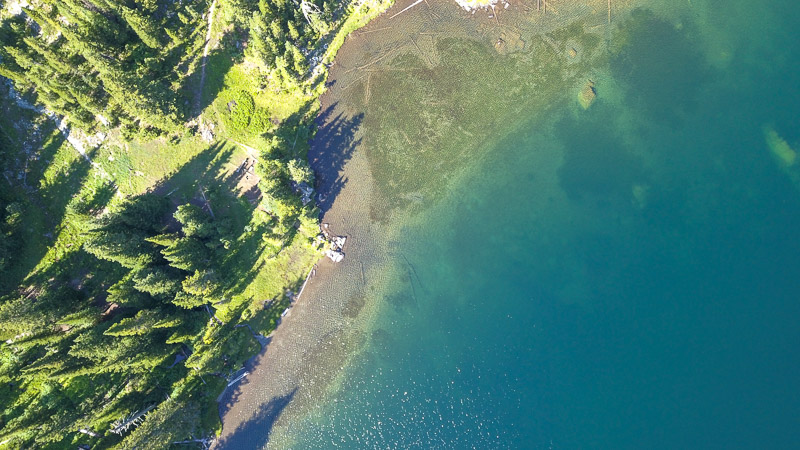
8. Choose more sustainable hotels and tour providers.
If there’s one thing I’ve learned from my job, writing about sustainable travel and reviewing sustainable products, it’s that not all companies are created equal.
I think it’s easy to get jaded and think that every company out there is just doing whatever they can to make a buck, and there’s no meaningful difference between them. But I can tell you that many of the small companies I’ve written about (and even some big ones) exist for the same reason Tilted Map exists: Their founders see how business can make the world better.
Without going on too much on this topic, let me direct you to the best ways to find more sustainable accommodations, and other sustainability-focused travel companies, along with other simple tips and resources for more sustainable travel.
[Related: So Big Cruise Ships Are Bad for the Environment, Buy Why, Exactly? And my own experience with my favorite cruise alternative.]

9. Take more public transit.
What we do once we get on the ground matters, too. Opting to take more public transit, ride bikes, or walk, instead of automatically getting in a taxi reduces not only the carbon emissions but the smog we produce in the cities we visit.
I always include sustainable transit options in my destination guides, so I’ve got you covered here! Example: My weekend getaway guide to the Adirondacks (a foodie and outdoorsy destination in upstate New York that really surprised and impressed me).
[Coming Soon: Stay tuned for my guide to all the ways to get around Milan, Italy – my former expat home! Metro, trams, trains, busses, sharable bikes, electric vehicles…]
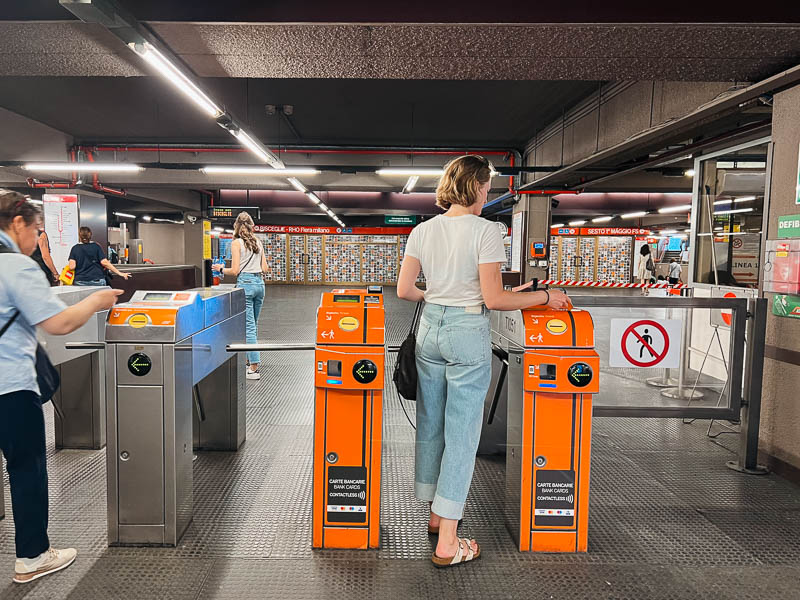
[Related: You know what makes public transit easier? Packing less stuff. Check out my guide to help you do just that. If you want to take it a step further (no wheelie bag!) don’t miss my review of the best travel backpack.]
10. Combine trips, get more out of your emissions.
Look, I get it, you’re probably not a full-time travel blogger, and you probably have limits on how long your vacations can be. It’s okay. Again, I’m not here to shame. I’m here to provide ideas, and it’s up to you to think about how you might be able to implement them. So get creative!
Let’s say you live in Chicago, need to go to San Francisco for work, and were planning to go to Hawaii on vacation. Can you schedule those into one trip, so that you fly across the Western US just once, instead of twice?
That’s just one example, but again, let the idea sink in, and you’ll find yourself coming up with creative ideas to make your travel more efficient.
I’ve done this lots of times with fun trip too, like by turning a flight home from Europe to the US into an excuse for a mini-vacation in Porto, Portugal.
[Coming Soon: Stay tuned for my guide finding layover trip opportunities!]
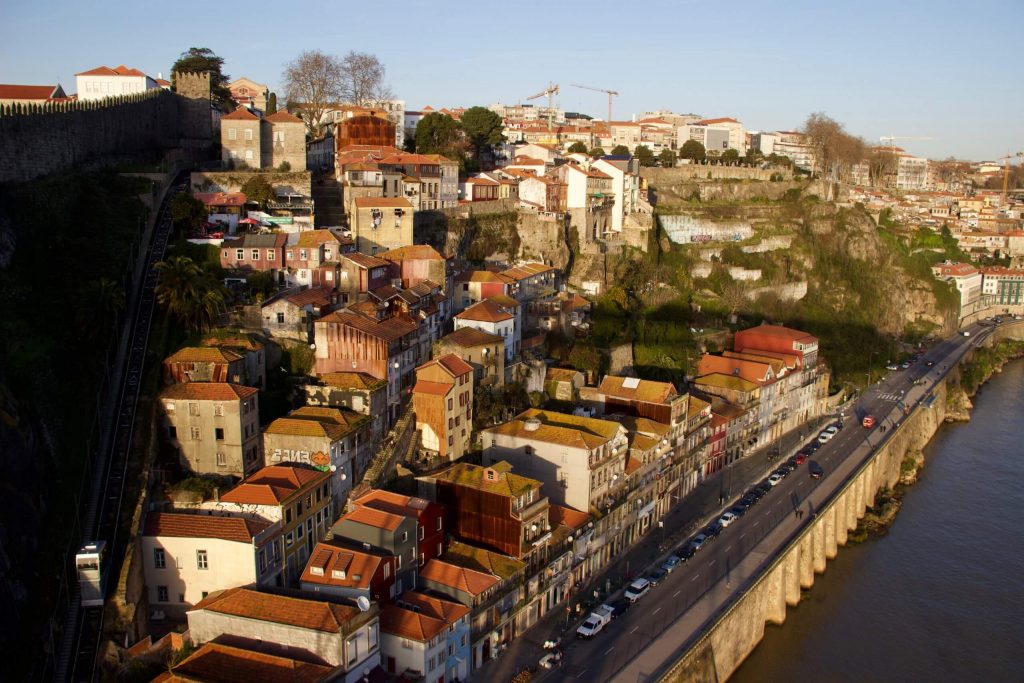
Before you go…
I’d love to know what you think of these tips in the comments below. In particular:
Which of these climate-smart travel ideas sounds easiest to start with for you, and which sounds hardest?
Read Next: More sustainable ideas to simplify your life:
(And destination to refresh your mind…)
- Misfits Market – perfectly good groceries that would have gone to waste, delivered to your door. Check out my Misfits Market review here.
- Bite Toothpaste Bits – the best way to stop buying those non-recyclable tubes! Here’s my Bite review (along with all the other brands I tested).
- The Azores – a gorgeous escape in the middle of the Atlantic that you can get to with a direct flight from the East or West Coast. (And here’s my 7-day itinerary for the island of Terceira.)


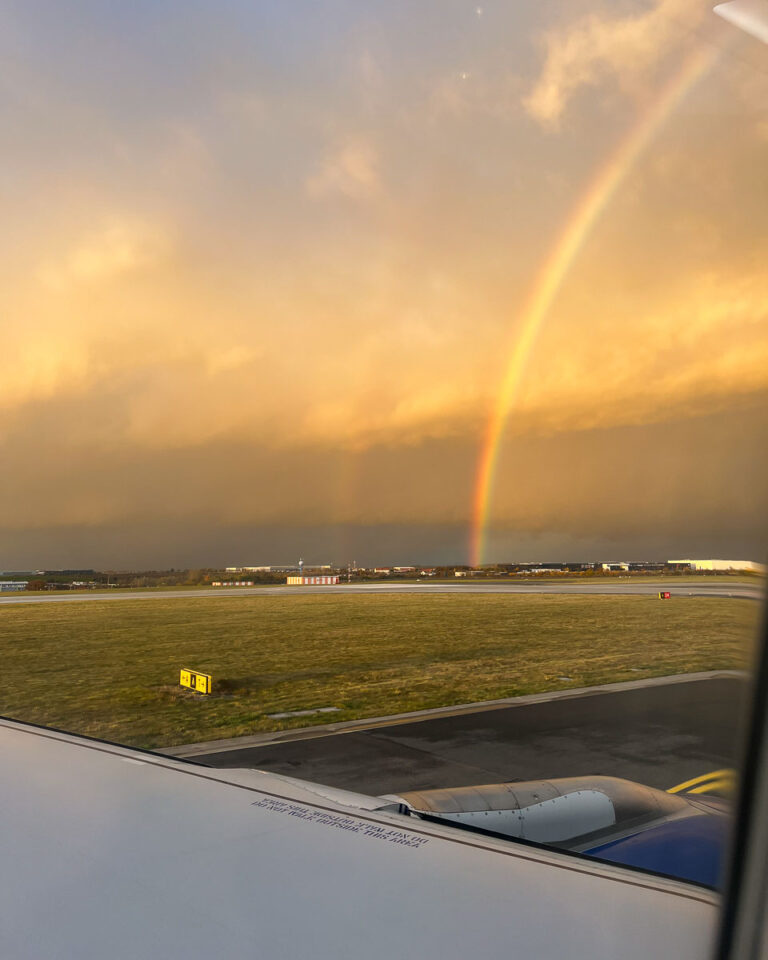

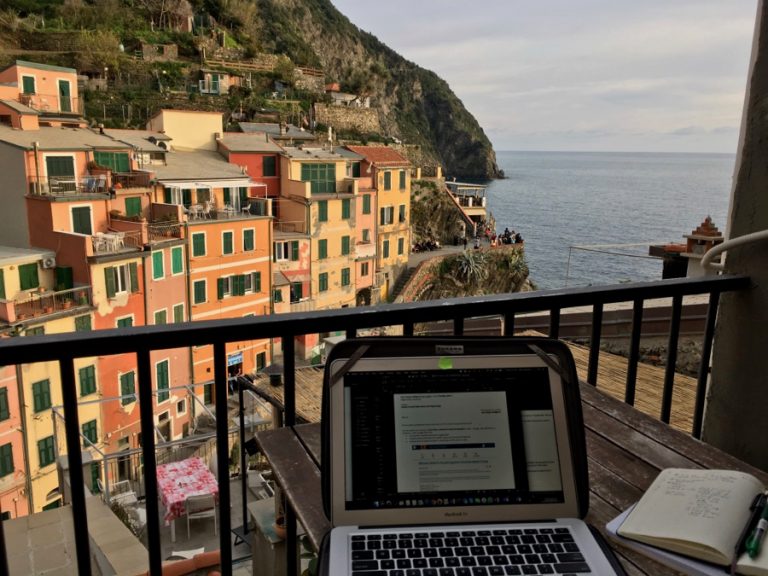
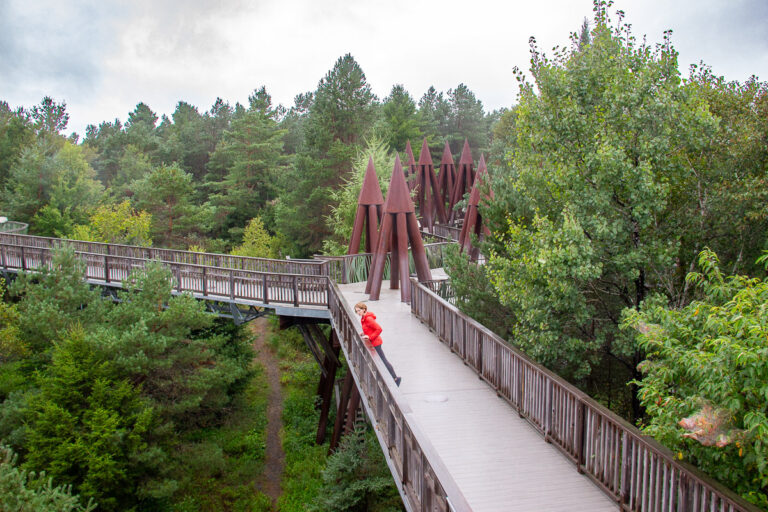

It seems like the “Lowest CO2” option is gone from Kayak. I don’t see it anymore 🙁
Hi Carli,
It’s still there! You just have to click “other sort” on the right-hand side and you’ll see it. Let me know if that works for you! (And unfortunately it’s only available on desktop, but not yet on their app.)
– Ketti
Dear Ketti,
nope unfortunately it is completely gone for me. The option is missing also from the “Other sort” menu.
Really a shame.
– Carli
Really? That’s so odd, and yes, definitely a shame. Could you tell me where you’re located? I’m going to reach out to Kayak and ask if it’s only available in certain countries, or something like that. Stay tuned, I’ll let you know if I hear anything from them!
In the meantime, if you want to try Momondo, they have a similar feature. Skyscanner does, as well, although its calculations aren’t as aggressive/ accurate. Please let me know if either of those work for you!
– Ketti